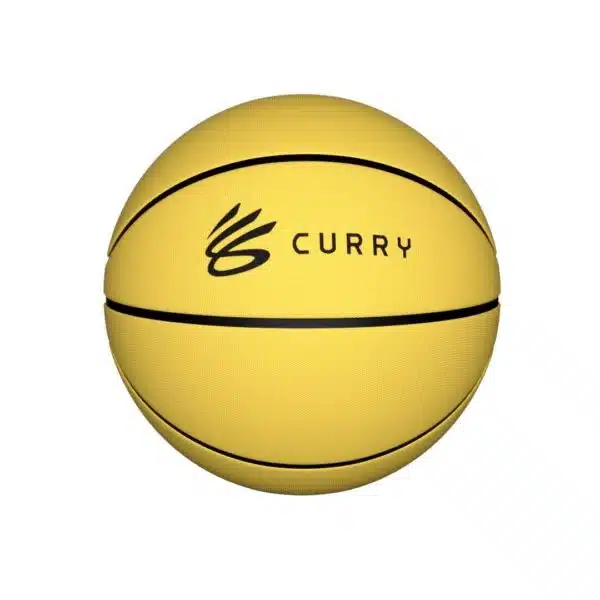How Under Armour’s Curry Brand shoes are taking off in the metaverse
What marketers can learn from Under Armour’s roadmap for “NF3s.”
Under Armour’s Curry Brand sneakers are moving as fast in the metaverse as they do on the court. While NBA three-point king Stephen Curry extended his legacy with a fourth league title (and fourth Finals MVP) this spring, hoops fans took to the metaverse to score special Curry Brand NFTs, called “NF3s.”
The cross-promotion was part of a long-term initiative executed by Under Armour and spearheaded by NFT branding and tech company Luna Market.

“For Curry Brand the push into Web3 has really been about finding new ways to connect to community and experimenting with goods and experiences,” said Ryan Drew, general manager of Curry Brand at Under Armour. “Curry Brand was founded on performance and purpose. So, technology and innovation, as it relates to the footwear world, is part of our DNA. Taking that mindset into the roadmaps we are building is a no brainer especially when Stephen is personally invested in these communities.”
Game tie-ins. With their latest promotion, Under Armour capitalized on fan interest from real games by tying special NFT drops to results on the court. Every time Curry hit a three-point shot during the NBA playoffs, nine rare basketball NFTs were released via the “Curry Counter” on the Curry Brand NF3 site.
Since Curry became the all-time leading three-point shooter earlier in the season, it was a safe bet that he would hit his shots in games. The promotion worked even better because Curry’s team, the Golden State Warriors, went all the way in the playoffs and won the championship, giving the campaign maximum leverage.
Dig deeper: Gap partners with DOGAMI to release pet-themed NFTs

Interactive and interoperable. The basketball NF3s that were released during the playoffs were free, but limited in number. Fans can now bid on them in the resale market on the OpenSea marketplace.
Through the Curry Brand NF3 site, NF3 basketball owners can combine the basketball with “serums” in a virtual “mixology room.” The result of this mad science experiment is a Basketball Headz avatar. Users can take this avatar and use it on different metaverse platforms, including Decentraland, The Sandbox, Gala Games and Rumble Kong League.
Earlier in the year, Under Armour commemorated Curry’s record-breaking three-point shot, which made him the NBA’s all-time leader. For that promotion, the Curry Brand released metaverse-wearable sneakers, called the Genesis Curry Flow. There were 2,974 of them, and they were randomly assigned five levels of rarity. They were priced at $333 and sold out in minutes. Under Armour gave the profits from the sale to charity.

Genesis Curry Flow wearable users will gain exclusive access to bidding on the physical version of the shoe later this year.
Under Armour roadmap. Owners of the Genesis Curry Flow understand that having them in their possession will give them access to other real and digital promotions down the road.
Similarly, Curry Brand is invested in NFTs long-term. They plan to release more wearables for avatars in 4Q this year to keep fans engaged while the new NBA season kicks off. And next year, the plan is to engage Basketball Headz avatar users with activations across different metaverse platforms, in an interoperable way. Potential activations include IRL in-person events, as well.
Why we care. The multi-pronged long-term strategy by Under Armour shows how marketers can tap into real fan engagement across real-world sports action and NFT bidding in the metaverse.
It’s important to note that Stephen Curry is one of the most famous athletes on the planet, so he and Under Armour’s Curry Brand have special pull in bringing consumers to Web3 environments. But we’ve also seen over the last year a number of other brands, especially in fashion and apparel, testing the waters and building a ripple effect.
Fans who own NFT wearables will want to show them off in all metaverse environments. That’s why Web3 aspires to be interoperable, but it’s not quite there yet.
“From an interoperability standpoint, if I created a metaverse jersey, I need to transport that to metaverse games, including those owned by large gaming companies coming into the space,” said Billy Huang, co-founder of Luna Market. “So, it’s amazing from a brand marketing standpoint, but we still have to build those partnerships and connections. The onus is on partnerships. Agencies are coming in to centralize a lot of those connections.”
So, yes, this is still early stages for metaverse marketing because it lacks standardization and interoperability. But big brands and celebrities are carving out a path to multiple platforms and long-term engagement.
Contributing authors are invited to create content for MarTech and are chosen for their expertise and contribution to the martech community. Our contributors work under the oversight of the editorial staff and contributions are checked for quality and relevance to our readers. MarTech is owned by Semrush. Contributor was not asked to make any direct or indirect mentions of Semrush. The opinions they express are their own.
Related stories
New on MarTech